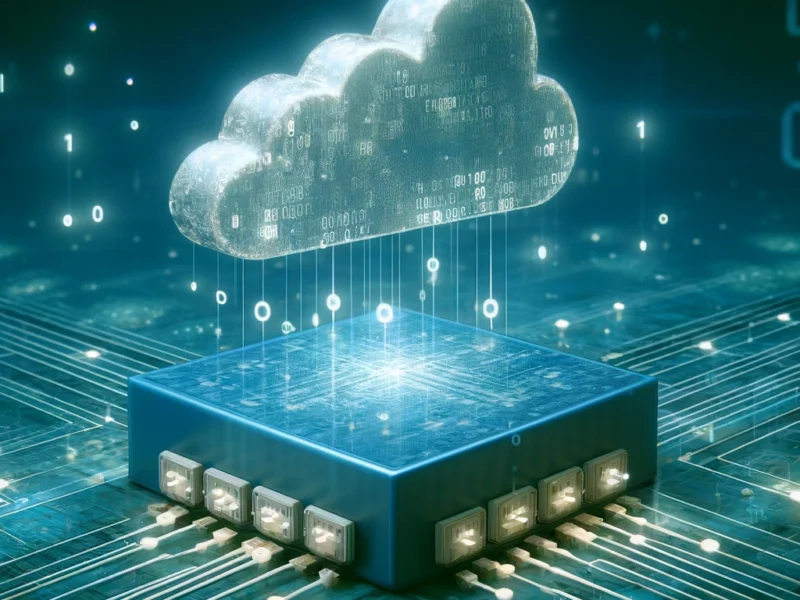While large-scale mining operations dominate the mining industry, it’s still possible to mine bitcoin at home. In this guide, we’ll walk through everything you need to know to start mining bitcoin in your own space.
Understanding Bitcoin Mining
TIn simple terms, mining is the process of verifying and adding new transactions to the bitcoin blockchain. Miners use specialized hardware to solve complex mathematical equations, and in return, they are rewarded with newly minted bitcoins.
Mining serves two crucial functions in the bitcoin ecosystem. First, it secures the blockchain by ensuring that all transactions are valid and confirmed. Second, it introduces new bitcoins into circulation, with a maximum supply of 21 million coins.
In the early days of bitcoin, it was possible to mine using a regular computer CPU or GPU. However, as more miners joined the network, the difficulty of mining increased exponentially. Today, profitable mining requires specialized hardware known as ASICs (Application-Specific Integrated Circuits).
Assessing Profitability
Before investing in mining hardware and setting up a home operation, it’s crucial to assess the potential profitability. Several factors come into play, including:
- Hardware costs: ASIC miners can range from a few hundred to several thousand dollars.
- Electricity costs: Mining consumes a significant amount of power, so electricity rates in your area will greatly impact profitability.
- Bitcoin price: The value of bitcoin can fluctuate wildly, affecting mining revenue.
- Mining difficulty: As more miners join the network, the mining difficulty increases, reducing the amount of bitcoin earned per unit of computing power.
There are several online calculators that can help estimate mining profitability based on these variables. Do the math and understand that home mining may not always be profitable, especially with the high upfront costs and increasing mining difficulty.
Choosing Mining Hardware
After considering the profitability of home mining, the next step is selecting the right hardware. ASIC miners are designed specifically for bitcoin mining and offer the best performance per watt of electricity consumed.
Some popular ASIC miners include:
- Antminer S19 Series (Bitmain)
- WhatsMiner M30S Series (MicroBT)
- AvalonMiner 1246 (Canaan)
When choosing hardware, consider factors like hash rate (computing power), energy efficiency, noise level, and price. It’s also important to purchase from reputable suppliers to avoid scams or faulty equipment.
Setting Up Your Mining Environment
Once you have your hardware, you’ll need to set up a suitable mining environment. ASIC miners generate significant heat and noise, so it’s important to have proper cooling and ventilation. A dedicated mining space, such as a garage or basement, can help contain the noise and heat.
You will also need a stable internet connection and a reliable power supply. ASIC miners can draw a lot of power, so make sure your electrical setup can handle the load safely. A surge protector can help safeguard your hardware from power spikes.
Configuring Your Mining Software
Most ASIC miners come with their own proprietary software, but there are also open-source options like CGMiner and BFGMiner.
The steps in configuring your mining software include:
- Connecting to a mining pool: Solo mining is no longer viable for most home miners due to the high mining difficulty. Joining a mining pool allows you to combine your computing power with other miners and share the rewards.
- Setting up a bitcoin wallet: You’ll need a secure bitcoin wallet to receive your mining payouts. Hardware wallets like Trezor or Ledger offer the highest level of security.
- Configuring your miner settings: This includes entering your pool information, wallet address, and optimizing settings like clock speed and fan control for your specific hardware.
There are numerous online guides and community forums that can help you through the setup process for your particular hardware and software combination.
Monitoring and Maintenance
Once your miner is up and running, it’s important to monitor its performance and maintain your equipment. Most mining software includes built-in monitoring tools that display your hash rate, temperature, and fan speed.
Regular maintenance tasks include:
- Cleaning dust and debris from your miner to prevent overheating
- Ensuring your internet connection and power supply remain stable
- Updating your mining software and firmware as needed
- Monitoring your mining pool’s performance and payout consistency
Taxes and Legal Considerations
As with any form of income, it’s important to understand the tax implications of bitcoin mining. In most jurisdictions, mined bitcoin is treated as taxable income based on its fair market value at the time it’s received.
It’s crucial to keep detailed records of your mining income and expenses, including hardware costs, electricity bills, and pool fees. Consult with a tax professional familiar with cryptocurrency to ensure you’re reporting your mining income correctly.
Additionally, be aware of any local regulations or restrictions related to cryptocurrency mining. Some areas may have zoning or noise ordinances that could impact your ability to mine at home.
Related:How to Start Mining Bitcoin on Your PC
Mining bitcoin at home can be a rewarding venture for those willing to put in the time and effort to understand the process and set up their equipment properly.
Key Takeaways
1. Bitcoin mining involves verifying transactions and adding them to the blockchain, and miners are rewarded with newly minted bitcoins for their efforts.
2. Profitable bitcoin mining today requires specialized ASIC hardware, which can be expensive upfront.
3. Assessing profitability is crucial before starting to mine at home, taking into account hardware costs, electricity rates, bitcoin price, and mining difficulty.
4. Choosing the right ASIC miner involves considering factors like hash rate, energy efficiency, noise level, and price, and purchasing from reputable suppliers.
5. Setting up a suitable mining environment with proper cooling, ventilation, power supply, and internet connection is essential for efficient mining.
6. Configuring mining software involves joining a mining pool, setting up a secure bitcoin wallet, and optimizing settings for your specific hardware.
7. Regular monitoring and maintenance of your mining hardware and software are important to ensure optimal performance and longevity.
8. Understanding the tax implications and legal considerations of bitcoin mining is crucial, and detailed record-keeping is necessary for proper reporting.
9. Staying informed about the latest developments in hardware, software, and regulations can help home miners stay competitive and compliant.
Frequently Asked Questions
1. Is it still profitable to mine bitcoin at home?
The profitability of home mining depends on several factors, including hardware costs, electricity rates, bitcoin price, and mining difficulty. It’s important to carefully assess these variables and use profitability calculators before investing in home mining.
2. How much does it cost to set up a bitcoin mining rig at home?
The cost of setting up a mining rig can vary greatly depending on the specific hardware and scale of your operation. ASIC miners can range from a few hundred to several thousand dollars, and you’ll also need to factor in costs for electricity, cooling, and other equipment.
3. Can I mine bitcoin with my personal computer?
While it was once possible to mine bitcoin with a regular computer CPU or GPU, the increasing mining difficulty has made this approach largely obsolete. Today, profitable bitcoin mining requires specialized ASIC hardware designed specifically for the task.
4. How do I choose a profitable ASIC miner?
When selecting an ASIC miner, consider factors like hash rate (computing power), energy efficiency, noise level, and price. It’s also important to purchase from reputable suppliers to avoid scams or faulty equipment.
5. What is a mining pool, and why should I join one?
A mining pool is a group of miners who combine their computing power to increase their chances of solving a block and earning bitcoin rewards. Solo mining is no longer viable for most home miners due to the high mining difficulty, so joining a pool allows you to earn more consistent payouts.
6. How do I secure the bitcoin I mine?
It’s crucial to use a secure bitcoin wallet to store your mined coins. Hardware wallets like Trezor or Ledger offer the highest level of security by keeping your private keys offline. Always follow best practices for wallet security, such as enabling two-factor authentication and keeping backup phrases secure.
7. How much electricity does bitcoin mining consume?
Bitcoin mining can consume a significant amount of electricity, depending on the efficiency of your hardware and the scale of your operation. It’s important to factor in electricity costs when assessing profitability and to ensure your electrical setup can safely handle the load.
8. Do I need to pay taxes on the bitcoin I mine?
In most jurisdictions, mined bitcoin is treated as taxable income based on its fair market value at the time it’s received. It’s important to keep detailed records of your mining income and expenses and to consult with a tax professional to ensure proper reporting.
9. Can I mine other cryptocurrencies besides bitcoin at home?
While this guide focuses on bitcoin mining, it is possible to mine other cryptocurrencies at home as well. However, each cryptocurrency has its own unique mining algorithm and hardware requirements, so it’s important to research and assess profitability for the specific coin you’re interested in mining.
10. What are the risks involved in home bitcoin mining?
Some of the risks involved in home bitcoin mining include financial risks (upfront costs and potential unprofitability), electrical risks (high power consumption and potential fire hazards), and regulatory risks (compliance with local laws and regulations). It’s important to carefully assess these risks and take appropriate precautions before starting to mine at home.










